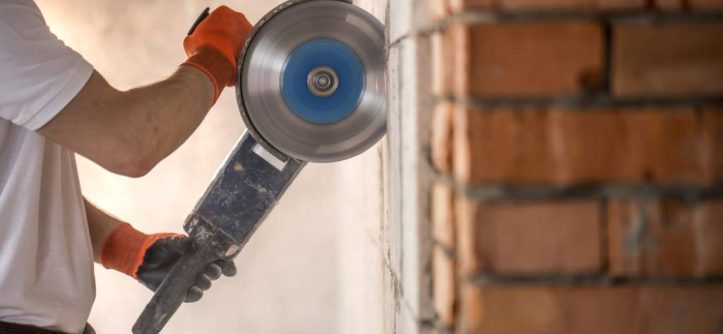If your angle grinder suddenly stops working, emits smoke, or smells like something is burning, you might be dealing with a burnt-out motor. Don’t throw it away just yet! Angle grinders are reliable power tools, and in many cases, you can repair them at home with the right tools, some basic knowledge, and a bit of patience.
In this guide, you’ll learn how to repair a burnt-out angle grinder, how to diagnose the problem, what tools you’ll need, and expert tips to help you restore your grinder’s performance. Whether you’re a DIY enthusiast or a professional looking to save money, this article offers actionable insights for fixing your tool effectively.
Common Signs of a Burnt-Out Angle Grinder
Before jumping into repairs, it’s important to recognize the symptoms of a burnt-out or damaged angle grinder. Here are a few common signs:
- Burning Smell: A strong burnt smell usually indicates motor coil or brush damage.
- Smoke: Smoke from the vents is a clear signal that something is overheating or burning.
- Tool Not Powering On: If your grinder doesn’t start, even after checking the power source, internal components might be damaged.
- Grinding Noise or Sparks: Strange noises or excessive sparking from the motor housing can signal a worn-out armature or brushes.
- Excessive Heat: If your grinder heats up unusually fast or feels hot to the touch, it may have internal electrical faults.

What Causes an Angle Grinder to Burn Out?
Understanding what caused the failure can help prevent future issues. Some common causes include:
- Overuse or Overheating: Running the grinder continuously for extended periods without breaks.
- Clogged Air Vents: Dust and debris block airflow, causing the motor to overheat.
- Worn-Out Carbon Brushes: These wear down over time and can eventually stop the motor.
- Faulty Bearings: Worn bearings can cause drag, making the motor work harder than necessary.
- Voltage Fluctuations: Inconsistent power supply can damage electrical components.
- Inadequate Maintenance: Lack of cleaning and lubrication can lead to early failure.
Tools & Materials You’ll Need
Before beginning the repair, gather these tools and supplies:
- Screwdriver set (Philips and flathead)
- Multimeter (for electrical testing)
- Replacement carbon brushes
- Replacement armature (if needed)
- Soldering iron and solder (for wire repairs)
- Soft-bristled brush or air blower (for cleaning)
- Electrical cleaner or contact spray
- Lubricant or machine oil
- Safety gloves and goggles
Optional:
- A digital camera or phone (to take photos of wire connections before disassembly)
Explore Easy Projects to Personalize Your Space and Make Your House a Home.
Step-by-Step: How to Repair a Burnt-Out Angle Grinder
Step 1: Safety First
Unplug the angle grinder from the power source. If it’s a battery-powered model, remove the battery. Wear safety goggles and gloves to protect yourself from dust, metal shards, or accidental contact with sharp parts.
Step 2: Disassemble the Grinder
Use your screwdriver to remove the casing screws. Carefully lift the casing to expose the internal components such as the motor, brushes, armature, and switch.
Tip: Take photos of the wire layout and assembly before removing anything. This helps during reassembly.
Step 3: Inspect the Carbon Brushes
Carbon brushes are the most common parts to wear out. They conduct electricity to the motor and are subject to regular friction.
- Look for signs of wear: short brushes, uneven surfaces, or burnt edges.
- If brushes are worn down or broken, replace them with the same size/type.
- Gently pull the old brushes out and slot in the new ones.
Pro Tip: Always replace both brushes at the same time for even wear.
Step 4: Check the Armature and Commutator
If the grinder still doesn’t work after replacing the brushes, the problem could be a burnt armature. Here’s how to check it:
- Examine the commutator (copper segments at the end of the armature) for black burn marks or pitting.
- Rotate the armature by hand. It should move freely and smoothly.
- Use a multimeter to test for continuity between commutator bars. No continuity = a break in the winding.
Solution: If the armature is damaged, it’s best to replace it. Some grinders allow armature replacement as a spare part.
Step 5: Test the Switch and Wiring
Faulty power switches and damaged wires can also prevent operation.
- Use the multimeter to check continuity on the switch when pressed.
- Look for any burnt or disconnected wires.
- Resolder loose wires if needed and clean switch contacts with contact spray.
Step 6: Clean Internal Components
Use a soft brush or air blower to remove accumulated dust and debris. Focus on:
- Ventilation areas
- Fan blades
- Motor housing
Clean electrical parts with an electrical cleaner spray to remove grime and ensure good conductivity.
Step 7: Lubricate Moving Parts
Apply a few drops of machine oil to bearings or bushings. Do not over-lubricate, as excess oil can attract dust.
Step 8: Reassemble and Test
- Reconnect all wires according to your reference photos.
- Secure the housing back with screws.
- Plug in the grinder and switch it on briefly.
- If the motor runs smoothly without odd noises or heat, the repair was successful.
Preventing Future Burnouts: Maintenance Tips
To avoid repeated issues, follow these angle grinder care tips:
- Let it Cool: Avoid running the grinder non-stop for long periods.
- Clean After Each Use: Blow out dust and wipe surfaces.
- Inspect Brushes Periodically: Replace them before they wear out completely.
- Check Ventilation: Make sure vents aren’t blocked during operation.
- Use the Right Disc: Don’t overload the motor by using incorrect or dull discs.
- Store Properly: Keep the tool in a clean, dry place.
When to Call a Professional
While many angle grinder problems can be fixed at home, some issues may require professional repair:
- Extensive armature or field coil burns
- Cracked casing or damaged gearbox
- Consistent power issues even after brush replacement
- Warranty coverage still active
In such cases, it might be worth contacting the manufacturer or visiting an authorized service center.
Frequently Asked Questions (FAQs)
Q: Can a burnt motor be rewound?
A: Yes, but motor rewinding is a technical task that’s best handled by professionals unless you have prior experience.
Q: How long do angle grinder brushes last?
A: On average, carbon brushes last between 50–100 hours of use, depending on the load and usage.
Q: What causes sparks in the motor?
A: Small sparks are normal, but excessive sparking often means the brushes or commutator are damaged.
Q: Can I use generic brushes for my angle grinder?
A: It’s best to use brand-specific replacements, but high-quality generic brushes that match size/specs can work if sourced from a reliable supplier.
Conclusion
A burnt-out angle grinder doesn’t always mean the end of its life. With the right tools, some careful inspection, and a bit of DIY spirit, you can repair common issues like worn brushes, bad wiring, or a damaged armature.
This not only saves you money but also gives you a deeper understanding of how your tools work. Make sure to maintain your grinder regularly to avoid similar issues in the future.
Whether you’re cutting metal, grinding welds, or polishing stone, keeping your angle grinder in top condition ensures safer, smoother, and longer-lasting performance.




